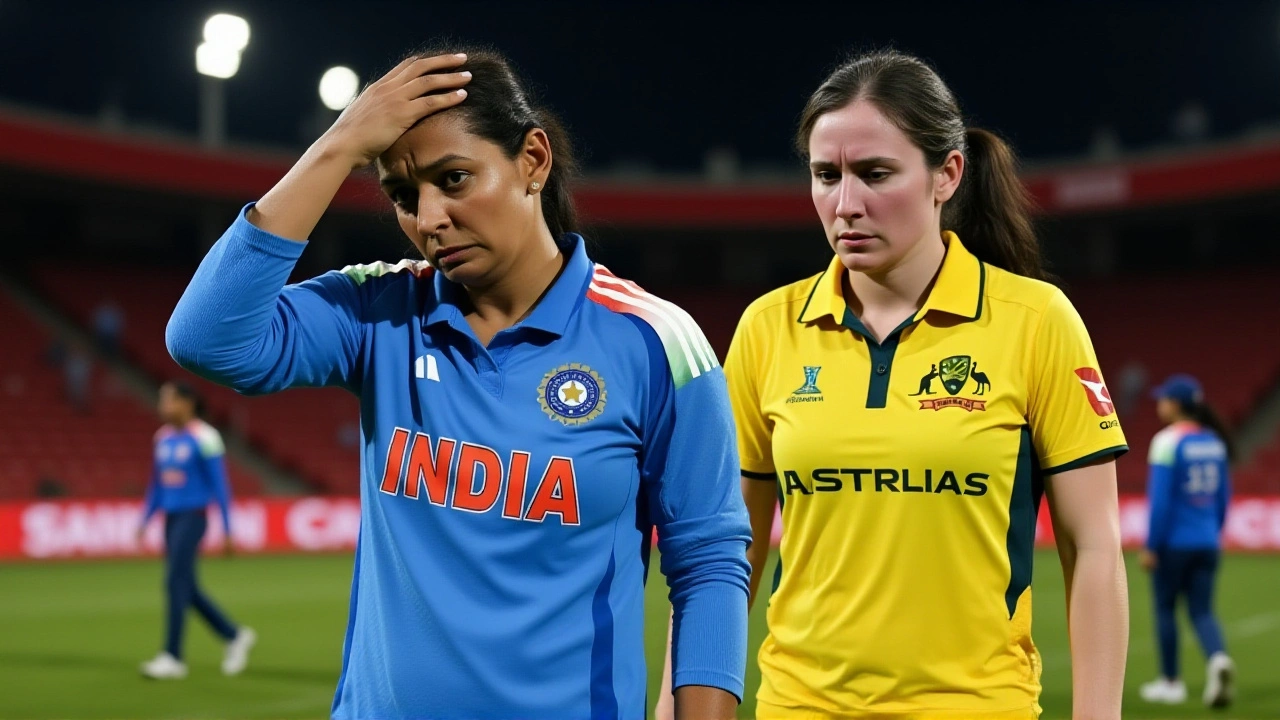When Harmanpreet Kaur, captain of the India Women's Cricket Team took the mic after a three‑wicket loss on October 12, 2025, she didn’t mince words: the side’s batting collapse cost them a historic win.
The drama unfolded at the Dr. Y.S. Rajasekhara Reddy ACA‑VDCA Cricket Stadium in Visakhapatnam, where Australia Women chased down a record chase of 331 runs – the highest successful run chase in women’s ODI history – with six balls to spare.
- Target: 331 runs (India 330/10 in 48.5 overs)
- Top scorer for Australia: Alyssa Healy 142 off 107 balls
- Best bowling for India: Charani 2/25
- Australia’s winning margin: 3 wickets, 6 balls remaining
Record Chase Sets New Benchmark
The match began at 9:30 AM IST under a bright sky. Opening partners Smriti Mandhana (80 off 98) and Pratika Rawal (75 off 92) stitched together a 155‑run opening stand, pumping the score to 294/4 after 42.5 overs.
At that point, the scoreboard resembled a dream: a total above 300 had never been chased in a Women’s World Cup before. But then the inevitable happened – six wickets fell for a mere 36 runs in the final seven overs, leaving India stranded at 330.
India's Collapse: What Went Wrong?
Analysts point to two decisive factors. First, the middle‑order failed to rotate the strike, allowing Australia’s bowlers to lock down the scoring zones. Second, a handful of dot balls in the last six overs proved fatal – exactly what Harmanpreet Kaur later lamented.
Australia’s attack was led by Annabel Sutherland, who claimed a maiden five‑wicket haul (5/40) and kept the run rate in check. Her disciplined spell forced India’s lower order into a frantic, high‑risk approach that only yielded singles and a couple of boundaries.
Reactions from the Captain and Key Players
“We could have added another 30‑40 runs,” Kaur said during the post‑match presentation at 6:45 PM IST. “The opening partnership was solid, but the last five overs cost us.” She praised Charani for her disciplined off‑spin, noting that even when Healy was hitting, the bowler “was not giving anything easily.”
Australia’s captain Alyssa Healy remained modest, acknowledging the pressure of a record target but emphasizing her side’s composure: “Every run mattered, and the partnerships we built in the middle lifted us across the line.”
Implications for India’s World Cup Campaign
The loss drops India to 2‑2 in the group, tightening the race for the top two spots. With crucial fixtures against England (October 16 in Mumbai), New Zealand (October 19 in Delhi), and Bangladesh (October 22 in Chennai) looming, the margin for error is razor‑thin.
Cricket Board of India (BCCI) officials, who have poured ₹1,200 crore (≈ $144 million) into the tournament, are now under pressure to reassess the squad balance. The team fielded only five specialist bowlers, a decision Kaur defended, saying, “Two bad games won’t define us.” Yet the coaching staff will likely explore adding a sixth seam‑bowler or promoting an all‑rounder to shore up the lower order.
Historical Context and Future Outlook
Australia’s 331‑run chase eclipses the previous record of 322 set by England Women in 2017. It also marks the first time a Women’s World Cup final‑group match has been decided with just six balls remaining.
For India, this collapse mirrors a similar slump in the 2022 World Cup where a 200‑run partnership unraveled in the death overs against South Africa. Learning from those past missteps, the team’s leadership now faces a pivotal test: can the batting depth be re‑engineered before the knockout stage?
Frequently Asked Questions
How does this loss affect India's chances of reaching the semifinals?
With India sitting at two wins and two defeats, a victory in the remaining three group games is essential. A loss to England or New Zealand would likely place them third or fourth, eliminating them from the knockout round.
What made Australia’s chase historic?
The 331‑run target surpassed the previous women’s ODI chase record of 322. Alyssa Healy’s 142 off 107 balls, backed by solid partnerships, clinched the win with six balls left, setting a new benchmark for high‑pressure chases.
Who were India's top performers despite the loss?
Openers Smriti Mandhana (80) and Pratika Rawal (75) anchored the innings. All‑rounder Charani impressed with two wickets for 25 runs and kept the run rate tight during Australia’s innings.
What changes might BCCI consider for the next matches?
Experts suggest bolstering the bowling attack, perhaps by promoting a sixth seam‑bowler or an all‑rounder, and giving the lower order more defined roles to avoid another late‑innings collapse.
When and where is the next World Cup match for India?
India faces England Women on October 16, 2025, at the Wankhede Stadium in Mumbai. A win there could revive their semifinal hopes.
